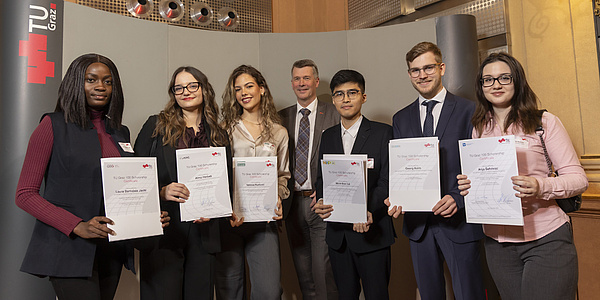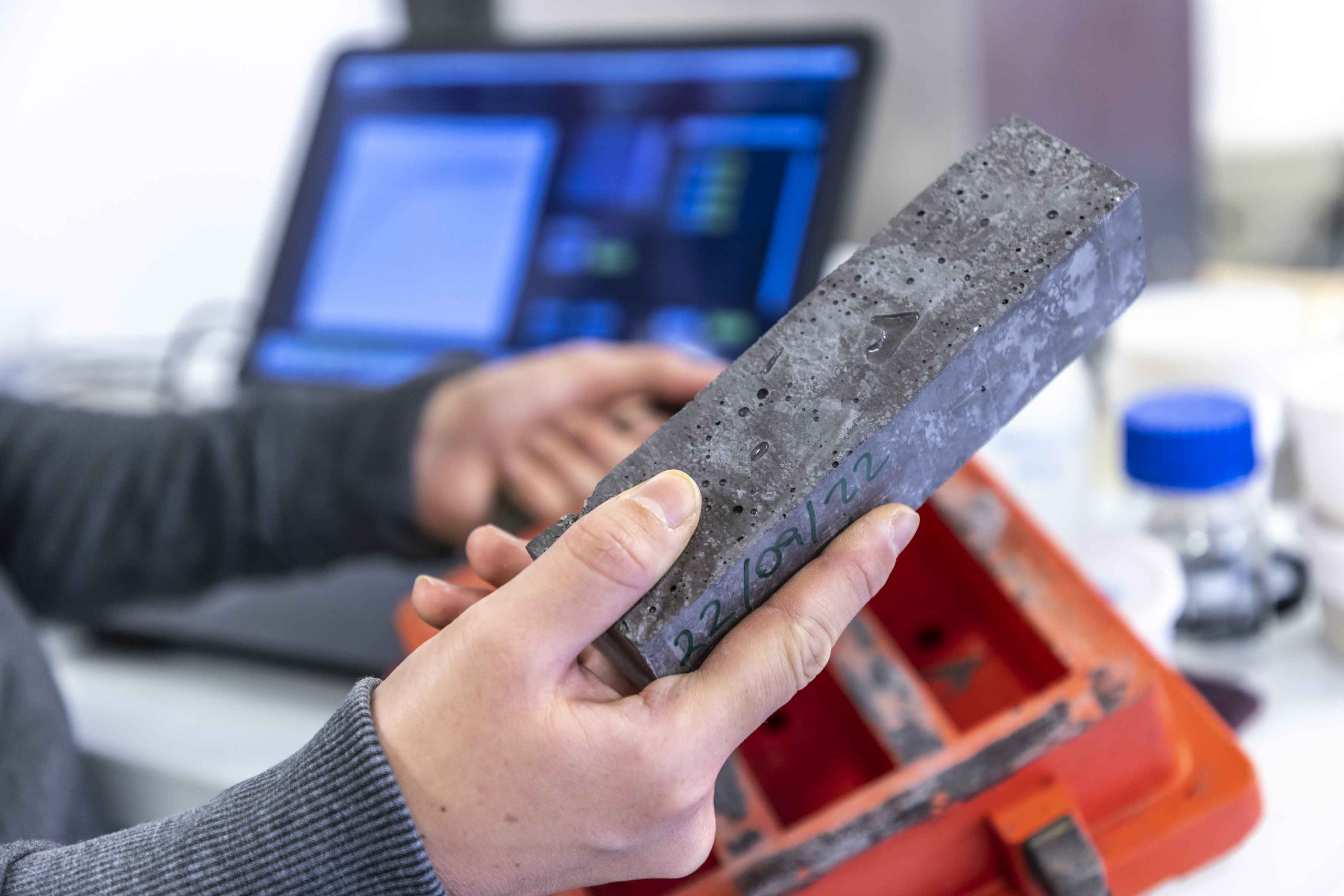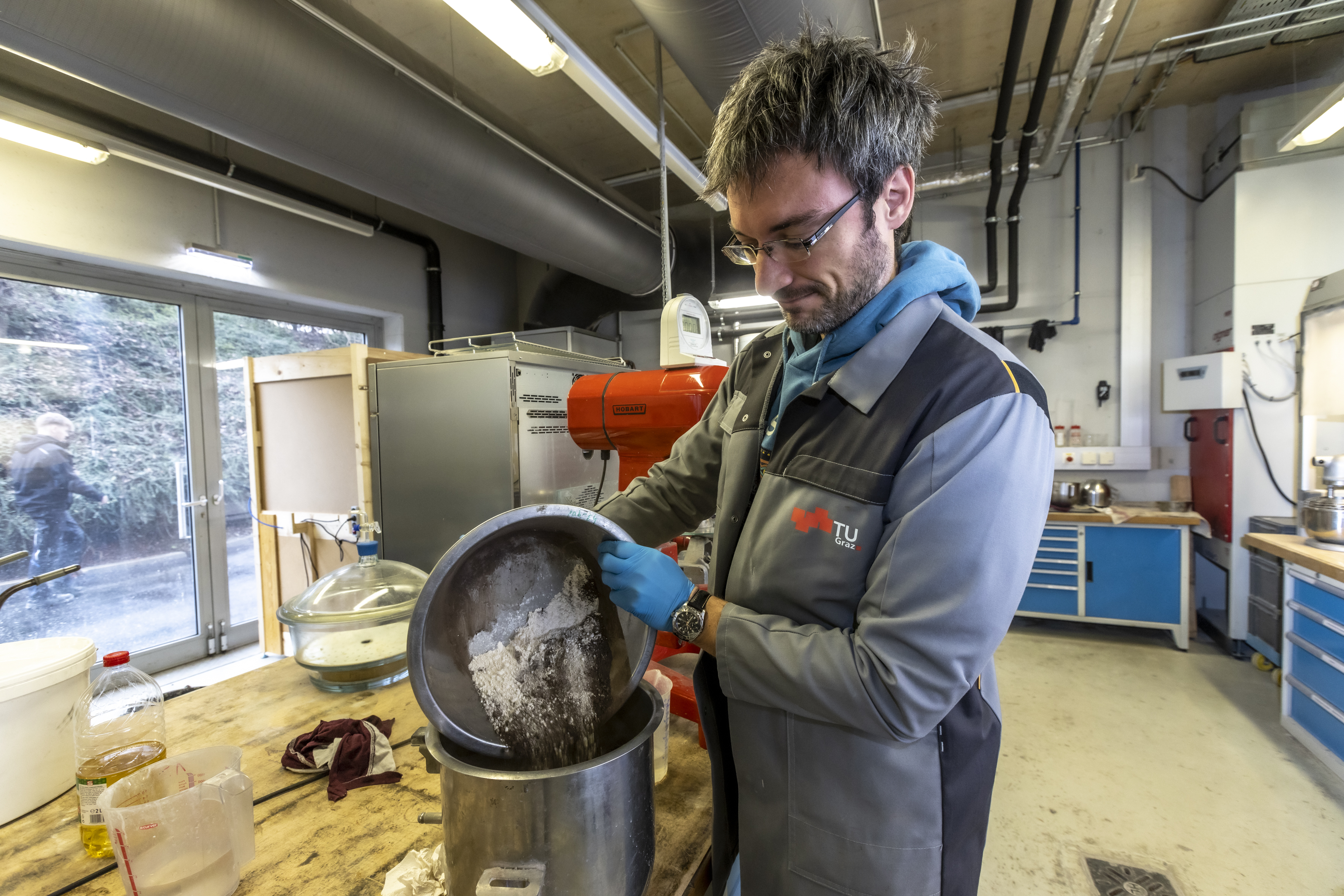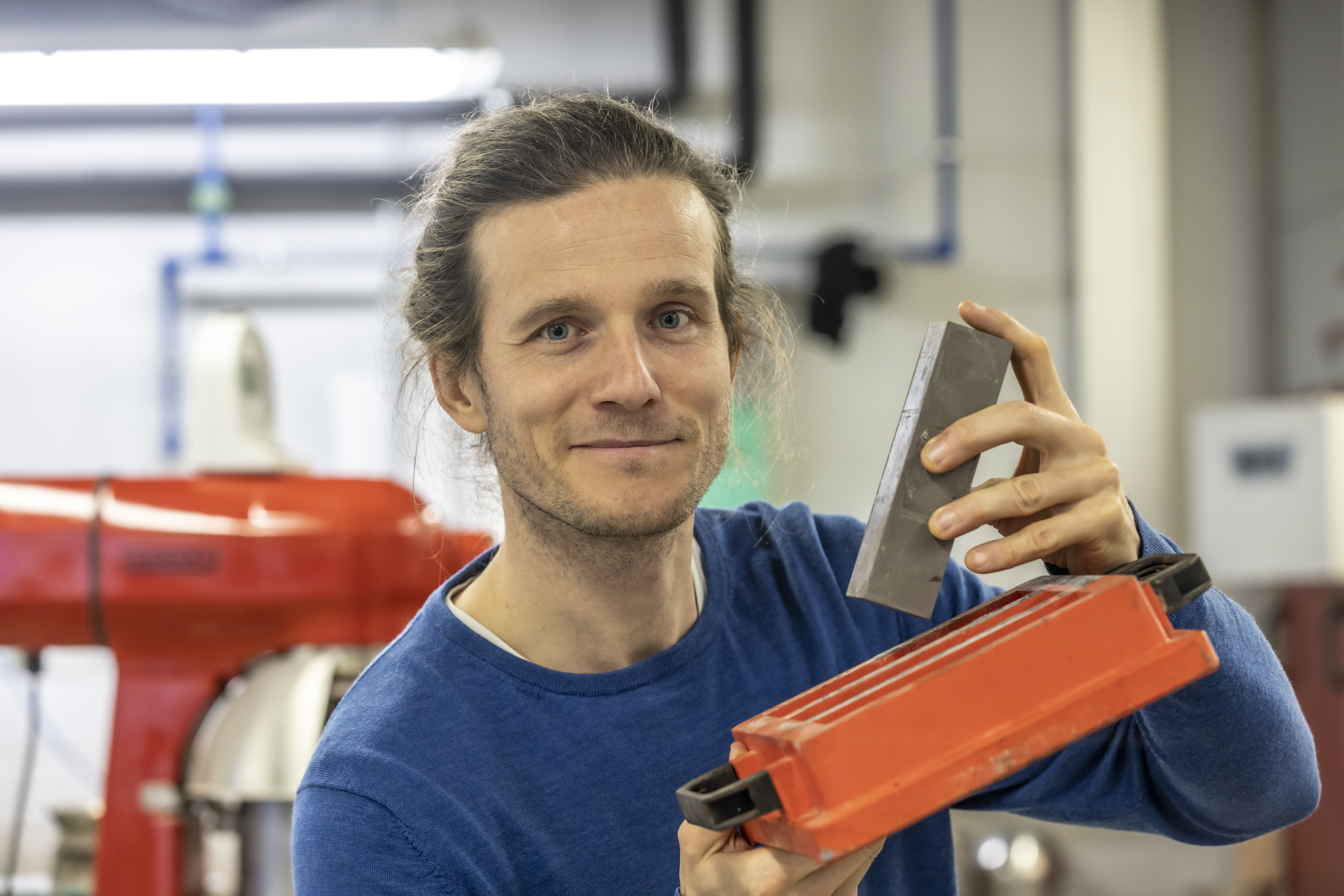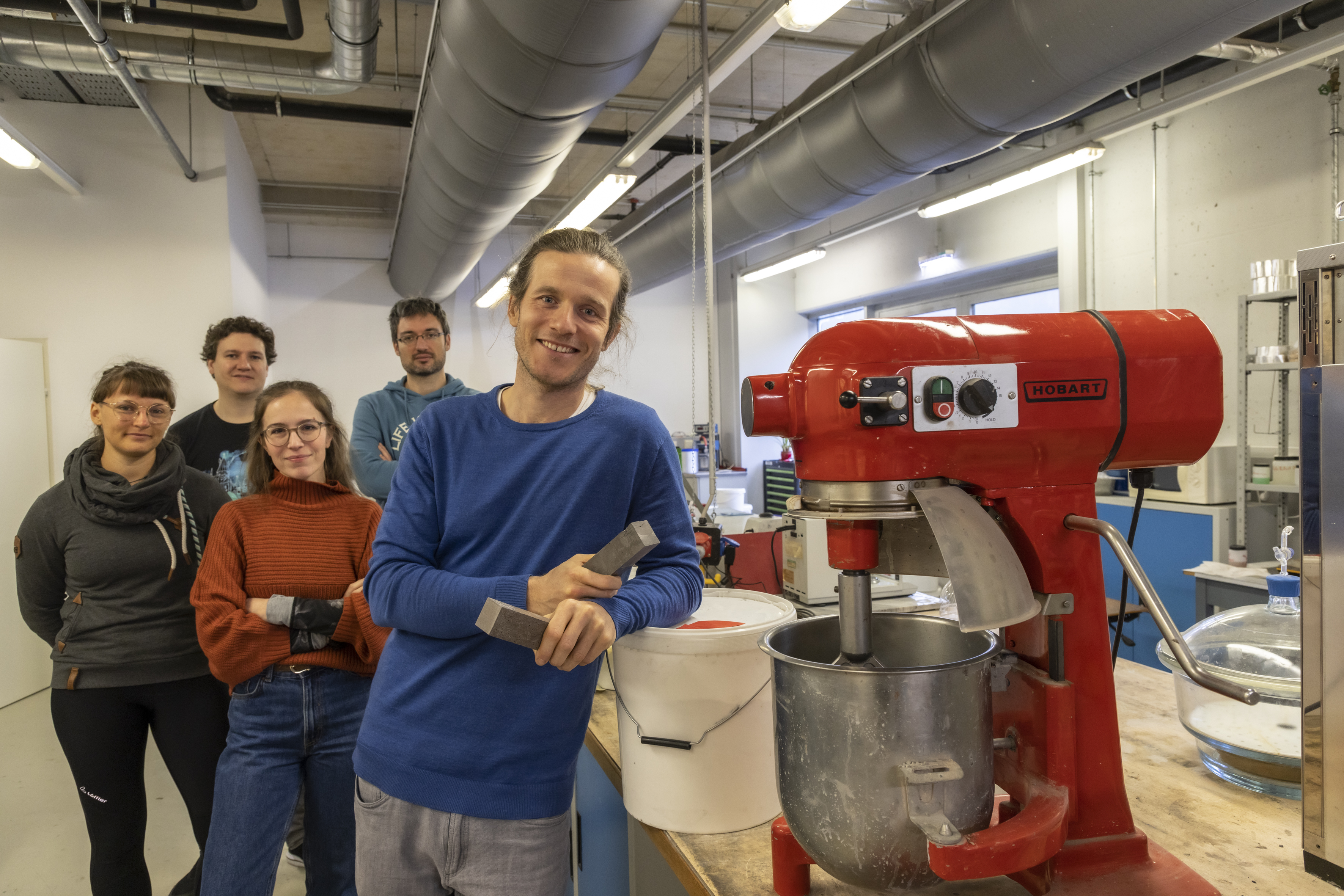New CD lab: Building Material from Residual and Waste Materials
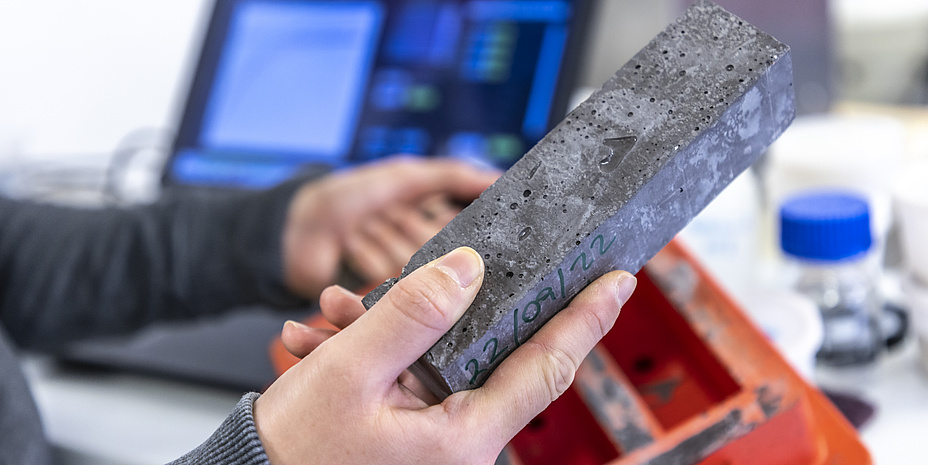
Sustainably produced concrete mixtures from mineral residues and waste materials could partially replace Portland cement-based concrete in the future, especially in application environments prone to corrosion such as sewage systems, biowaste plants or tunnel drainage systems – for Cyrill Grengg from the Institute of Applied Geosciences at Graz University of Technology (TU Graz), this is not only an achievable goal, but also makes economic and ecological sense.
He heads the Christian Doppler Laboratory for waste-based geopolymer construction materials in the CO2-neutral circular economy, which was officially opened today, and has eight important corporate partners at his side for his project. These partners are voestalpine Stahl Donawitz GmbH, Stahl- und Walzwerk Marienhütte GmbH, brantner green solutions GmbH, Initiative Ziegel, Research Association of the Stone and Ceramic Industry, CharLine GmbH, Kirchdorfer Fertigteilholding GmbH, MM-Kanal- Rohr- Sanierung GmbH and the Community of Styrian Wastewater Disposal Companies (including Linz AG and AWV Wiener Neustadt) and all see potential in the use of building rubble, slag, metallurgical gravel, mineral wool or ash for more environmentally friendly and resistant concrete.
This latest CD lab at TU Graz was opened today, 3 March 2023 in the assembly hall of TU Graz. Seven years of research will now be conducted together with the eight corporate partners. The largest public funding body for the CD lab is the Federal Ministry of Labour and Economic Affairs (BMAW). "The large number of participating companies from various sectors shows the great interest in greater resource efficiency and sustainability. Building material from residual and waste materials not only brings economic benefits, but also helps to reduce the burden on the environment. The know-how researched here can be the basis for many other innovations," emphasizes Minister of Labour and Economic Affairs Martin Kocher.
Less consumption of cement and resources and less corrosion
Inorganic industrial secondary raw materials, such as slag and ash, as well as residual materials, such as mineral wool and clay-rich demolition materials, are further processed in the CD lab and combined with carbon-rich waste materials, such as (waste) oils, biomass residues or organic fibres, depending on demand and intended use. The resulting geopolymer is an alternative to conventional Portland cement-based concrete. It offers comparable material properties, has better resistance to many types of corrosion and leads to less consumption of resources through recycling of previously landfilled residual and waste materials.
“Chemically, the geopolymer is something completely different from Portland cement, but the physical properties are very similar or even better in some cases,” says Cyrill Grengg, who sees great potential in geopolymers, especially in their much higher resistance to (bio)chemical corrosion. Portland cement is by far the most widely used binder in modern construction. However, it is susceptible to corrosion from wind, weather and other environmental influences, such as (bio-)chemically aggressive wastewater from sewage systems and sewage treatment plants. This leads to safety problems and high expenses for the maintenance of structures. Worldwide, costs caused by corrosion are estimated at 2.5 trillion US dollars (or approx. 3.4 percent of the global gross domestic product), large shares of which relate to concrete as a building material.
From landfills to the circular economy
At the same time, the production of building materials is responsible for about nine percent of all greenhouse gas emissions generated worldwide. And the current handling of residual and waste materials, for example from construction projects, still has great potential in terms of recyclability. Every year, 54 million tonnes of mineral waste are generated in Austria, which is 76 percent of the total waste volume. Of this, almost 60 percent is landfilled, resulting in the loss of valuable resources and large areas of land to landfill. “Today, large amounts of the residues and wastes used in the CD lab are landfilled, and only a small part is recycled. We want to take these materials away from landfills and integrate them into a CO2-neutral recycling economy,” says Cyrill Grengg.
The eleven-member team of the CD lab consists of lab manager Cyrill Grengg, Florian Mittermayr, Sara Raič, Florian Steindl, Stefanie Radinger, Bettina Ratz, Ognjen Rudić, Delara Etezad, Sylvia Perchthold, Iris Zögl and Jürgen Liederer.
Would you like to receive the latest stories, news, research stories, interviews or blog posts from TU Graz directly on your smartphone or in your email inbox? Subscribe to the TU Graz Telegram newsletter for free.
Kontakt
Cyrill GRENGG
Dr.rer.nat. BSc MSc
TU Graz | Institute of Applied Geosciences
Phone: +43 316 873 6366
cyrill.grengg@tugraz.at

